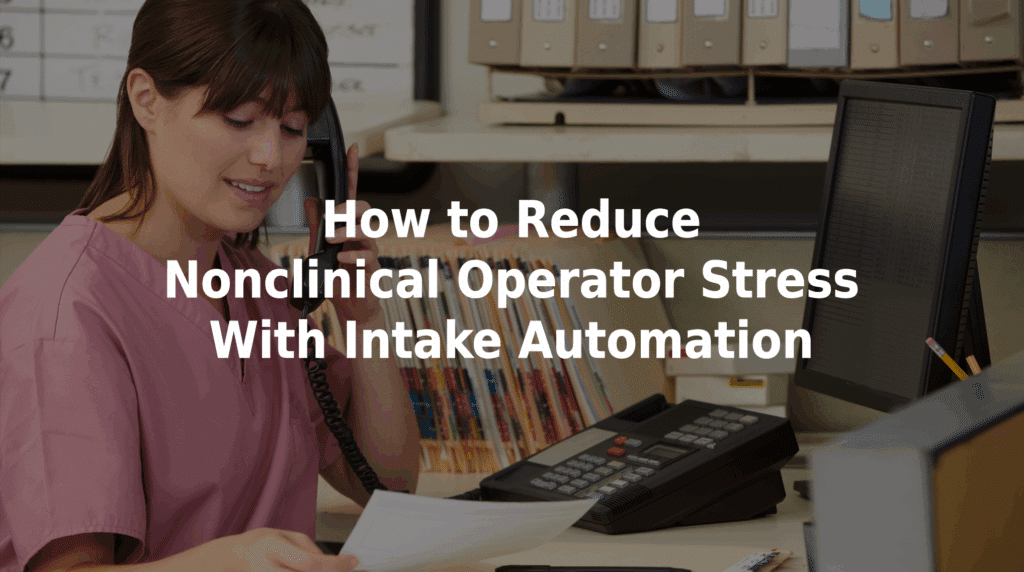How to Reduce Nonclinical Operator Stress With Intake Automation
Are your nonclinical call center operators overwhelmed by high call volumes, repetitive tasks, and pressure to improve message accuracy? Learning how to reduce nonclinical operator stress with intake automation is key to improving performance, lowering turnover, and creating a healthier work environment.
The Connection Between Intake Workload and Staff Stress
Operators are responsible for:
- Handling patient concerns quickly and efficiently.
- Documenting symptoms or requests with accuracy.
- Managing escalating call volumes during peak hours.
- Routing messages to the correct clinical teams.
Without structure and support, these responsibilities contribute to:
- Increased errors and miscommunication.
- High staff burnout and turnover rates.
- Longer hold times and reduced patient satisfaction.
- Lower operator confidence and job performance.
Miscommunication is already attributable to many instances of medical malpractice, reinforcing why addressing it is so important within any medical setting.
How Intake Automation Reduces Operator Stress
1. Structured Prompts Guide Patients
Give your patients the ability to self-report their symptoms, rather than waiting on hold for operators. An automated system can guide patients on how to fill out detailed, accurate messages by using dynamic, clinically developed intake forms.
2. AI-Powered Escalation Support
Automation can flag urgent symptoms for clinicians to review, rather than have operators take responsibility for them.
3. Reduced Repetition and Manual Documentation
Automation captures relevant patient information efficiently, decreasing repetitive tasks and freeing operators to focus on other high-value tasks.
4. Lower Call Volume With Self-Service Options
A secure chatbot can allow patients to submit their requests independently, reducing operator workloads during busy shifts.
5. Improved Confidence and Job Satisfaction
With fewer errors, clearer workflows, and real-time guidance, operators feel more supported and capable in their roles.
How Automation Can Reduce Stress and Turnover
A healthcare call center that’s facing high turnover rates due to operator fatigue from high call volumes and inconsistent intake would benefit from an automated solution. The right one could:
- Substantially reduce operator stress.
- Boost message accuracy over 99%.
- Decrease patient hold times and callbacks.
- Increase staff satisfaction and retention rates.
Best Practices for Supporting Nonclinical Staff
- Automate high-volume tasks like symptom intake and care requests.
- Use real-time dashboards to monitor message quality and reduce performance anxiety.
- Continuously collect staff feedback to refine workflows and increase engagement.
- Continue to train operators on how to address patient needs when necessary.
How MedMessage Automate Relieves Operator Stress
TriageLogic’s MedMessage Automate helps healthcare call centers reduce administrative burdens with AI-powered, secure message intake. Patients submit their concerns through intake forms that populate questions dynamically based on what they type. This allows for complete, accurate requests that are sent directly to their providers.
Key benefits include:
- Symptom-based prompts that improve message accuracy.
- Fewer callbacks to clarify symptoms.
- Real-time support for urgent symptom escalation.
- Reduced manual documentation for operators.
- Enhanced staff confidence and reduced burnout
Support Your Team With Smart Intake
See how automation can reduce stress, improve accuracy, and help your staff thrive. Contact us today to learn more about MedMessage Automate!

